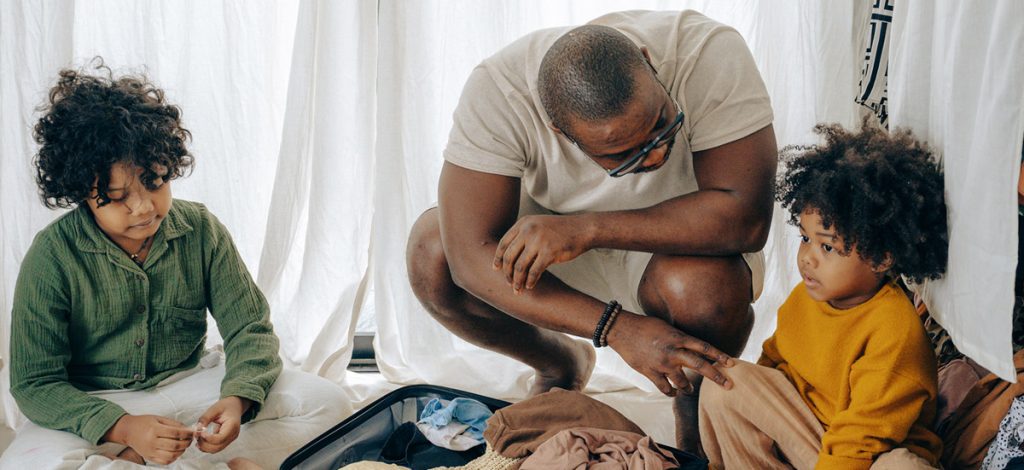Divorce can be a negative word. To many it represents long drawn-out stress and sadness, followed by a life lived alone. Yet, often this is not the case. Once your world has returned to a new kind of normal, you might be in a position to look for love again. And this may lead to a new relationship, or possibly a blended family.
Relationships are complex. They come with highs and lows, and a large amount of give and take on both sides. Add children and ex-partners to the mix and things just got even trickier. It is no longer about where to go for that romantic dinner, when you both have children it involves careful consideration every step of the way.
Until you have found that special someone who makes it all worthwhile, working through the intricacies of creating a blended family may seem all too much. However, if you meet the right person and you have mutual love, respect and understanding for each other, as well as acceptance of their children and their past, creating a new-style, blended family is not only possible, but often wonderful.
Here are our suggestions to work towards a peaceful, healthy blended family that will allow everyone who is part of it to thrive.
TAKE IT SLOW
We all know the exciting, dizzy feeling of new romance. As wonderful as it is, it can put you in the danger zone where rash decisions are made. There are about 300 wedding ceremonies a day in Las Vegas, two-thirds of which are thought to be impulse decisions. Don’t. Go. To. Vegas! Always remember the bigger picture. Ultimately, the very best way to the create a happy blended family, is to take it slow. Allow time for your relationship to grow, give your children time to get to know one another and your new partner. You should even give your ex-partner time to get used to you being a relationship and to feel comfortable that your new partner is a good role model to your kids. All this is invaluable advice when it comes to taking a large step such as moving in with one another.
FOCUS ON EACH PERSON SEPARATELY
The term ‘blended family’ can conjure up an image of two families joining and melting into one another to create something entirely new. Yes, the arrangement is new but everyone within it is the same person. They still have the same personalities and temperaments, and need care and empathy based around them. You may find one of your children is loving the new set-up, while another struggles with the dynamics or has a particular problem with a member of their new family. Just because you think your new blended family is the best thing since sliced bread, not everyone will adjust as easily. Our advice: not only do you need focus on the individual needs of yourself, your new partner and your children, but you must understand the individuality of your new step-children.
COMMUNICATE AND LABEL
One of the most important parts of creating a blended family is communication … right from the very beginning and throughout every single day. This is dependent on the age of the children involved. Again, they are individuals and will require different levels of explanations. Older children, especially teens, will want a say in how the new blended family works. During these early stages of communication, it’s good advice to establish what names your children will use for their new step-parent. Make sure it is something they feel entirely comfortable with, and it doesn’t have to be the same across the board. For example, a teenager might prefer to call your partner by their first name, but your partner’s two-year-old may like to call you mum. Of course, if the biological mum is still on the scene it would be better to suggest something different to avoid upset and confusion. Open-up the chat early on and let your children be involved.
BE MINDFUL OF YOUR EXPECTATIONS
OK, so your first marriage didn’t work, but you’ve got a second chance and you want it to be just perfect, the way you had always dreamed. You are already imagining the blissful Christmas days, the laughter, the love… everything that was completely lacking at the tail-end of your last relationship. As much as all these things are possible, they are expectations and not something you can force on others. Allow your blended family to grow naturally whilst giving it a gentle nudge every now and then to ensure it stays on track. Some good advice to keep in mind is, don’t have expectations for other family members, let them find their own way. If you let everyone get to know one another on their own terms they will develop deeper more meaningful relationships which will ultimately create your dream family … even if it turns out slightly different from your initial expectations.
MAKE ROOM FOR ROMANCE
It is a common mistake for couples to put so much energy into helping their children adjust to their new blended family set-up, that they neglect their own relationship. Remember, the reason you are combining your families is so that you can be together, and if cracks appear in your relationship they will filter through to everyone else. Start as you mean to go on. Make time for yourselves as a couple, without the children. Let the children see and understand that you are in love and that you need intimate time together. This is a wonderful tonic for children who have come from a broken home and it will teach them what a healthily relationship should look like. Learn from the mistakes of your past relationship and remember that you, as a couple, are role-modelling to everyone else in your blended family.
BOUNDERIES AND RULES
It is easy when you are first creating the structure of your new family, to let discipline and rules slip in the desperate hope that your children are happy with the new arrangement. This is not good advice. Children of any age are more well-behaved and content if they know what the rules are and where they stand. Moving into a new home with a new family will require new rules and boundaries. Make them perfectly clear at the start and treat all the children equally and age-appropriately. Listen to them if they have issues with the new rules and explain why they are in place, or accept suggestions for change if they are reasonable.
NEW ROUTINES AND MEMORIES
Re-partnering and the forming of a blended family is a time of looking forward, not back. There will be many memories of past family life for everyone involved, but you have created something brand new and exceptionally special. To get into the swing of things create new routines that involve the whole family. Maybe a weekly movie night, or a Sunday afternoon walk. Change how you do bedtime for younger kids so they associate this routine fondly with their new family. As time goes on, these will be cherished moments that start the memory bank of your new life together. With happy memories in the making, you are well on your way to building a brilliant blended family.
WATCH FOR RED FLAGS
Whilst you are basking in the wonder of your new blended family, it is important not to take your eye off the ball. Every person in your family will have a unique relationship with every other person. As your children grow these relationships change, making your family life a series of phases. Whilst you might be living The Brady Bunch lifestyle one week, things could take a downhill spiral the next. Be alert for red flags that suggest something isn’t right. Whether you choose to act or just keep an eye on it is up to you, but issues left unresolved within a family household have a tendency to implode and affect everyone. This is not only true of your children’s relationships but your own relationship with your partner. Life can get super busy but nothing is more important than family, so make sure it takes priority.
RESPECT THE OTHER FAMILIES
As much as you may be loving your new family life, it is important to respect that the children may also have another family. If you are co-parenting, tread carefully. As well as your blended family, your children have a family with your ex-partner and your new partners children have a family with their ex-partner. Confusing, yes! Always talk kindly about their families. Allow the children to look forward to spending time with them and make them feel comfortable when they come home. Try and communicate with the other families to ensure all the children’s needs are being met and that living between two homes is as easy as possible. Remember that no one is family better than another. Families come in all shapes and sizes and as long as there is love, that is enough.


